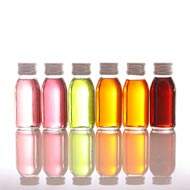- Bergamot Essential Oil
- Black Pepper Essential Oil
- Cajeput Essential Oil
- Camomile Oil
- Cedarwood Essential Oil
- Citronella Essential Oil
- Clary Sage Essential Oil
- Coriander Oil
- Lavender Essential Oil
- Rose Oil
- Eucalyptus Oil
- Fennel Essential Oil
- Frankincense Essential Oil
- Geranium Oil
- Grapefruit Oil
- Essential Oil Jasmine
- Juniper Berry Oil
- Lavandin Oil
- Lavender Oil
- Lemon Oil
- Lemongrass Oil
- Mandarin Oil
- Melissa Oil (Officinalis)
- Cypress Oil
- Aroma Essential Oil
- Aromatherapy And Essential Oils
- Avocado Oil Benefits
- Oil Healing Properties
- Essential Lemon Oil Health Benefits
- Lemongrass Essential Oil Health Benefits
- Mandarin Essential Oil Health Benefits
- Marjoram Essential Oil Health Benefits
- Massage Body Oils Health Benefits
- Melissa Essential Oil Benefits
- Essential Myrrh Oil Health Benefits
- Natural Essential Oil Health Benefits And Uses
- Neroli Essential Oil
- Niaouli Essential Oil
- Essential Oils And Uses
- Organic Essential Oils
- Patchouli Essential Oil
- Peppermint Essential Oil
- Petitgrain Essential Oil
- Rosemary Essential Oil
- Sandalwood Essential Oil
- Sandalwood Massage Oil
- Sunflower (Black) Seed Oil
- Tangerine Oil
- Tea Tree Oil Uses
- Thyme Essential Oil
- Vetiver Oil
- All Natural Oil
- Olive Oil Products
- Almond Oil For Hair,Massage,Cooking And Aromatherapy
- Best Olive Oil In The World - Reviews
- Avocado Oil
- Aromatherapy Essential Oils And Blends
- Essential Oils Aromatherapy
- Catnip Essential Oil
- Spikenard Essential Oil
- Chocolate Essential Oil
- Carrot Seed Essential Oil
- Manuka Essential Oil
- Yarrow Essential Oil
- Galbanum Essential Oil
- Linden Blossom Essential Oil
- Oregano Essential Oil
- Ravensara Essential oil
- Ylang Ylang Essential Oil
- Wintergreen Oil
- Helichrysum Oil
- Clove Oil
- Spearmint Essential Oil
- Pine Essential Oil
- Lime Essential Oil
- Lemon Verbena Essential Oil
- How Different Are Mint Oil And Peppermint Oil?
- Vegetable Oils
Tuberose Essential oil
Although tuberose may be an uncommon name in herbal medicine, it is well-known among manufacturers of the perfume industry. Since it blooms at night, it is popularly called ‘Night Queen’.
The beautiful fragrance of the flower makes it a valuable ingredient in perfumes; however, it is also gaining popularity in the world of aromatherapy for treating aches and pains and rejuvenating the mind.
Organic tuberose essential oil is renowned for its aroma and fragrance. The mesmerizing fragrance is said to rejuvenate the mind and the body; it is also believed to possess aphrodisiac properties. Tuberose is scientifically known as Polianthes Tuberosa. It belongs to the Amaryllis family from the genus Polianthes. The name tuberose is derived from the Latin word ‘tuberosa’, which means ‘swollen’. The plant has thin leaves and large white heavily-scented flowers.
Origin
Tuberose is a native to Mexico and thrives well in countries such as France, India, China, Hawaii, and Morocco. Aztec healers refer to this as the bone flower because of its waxy, luminous white flowers. Hawaiians make use tuberose for leis. The flower also has immense use in the Ayurvedic tradition. It is used to increase emotional stamina of a person. In Indonesia, it is used to make soy sauce and soups. In other parts of the world, it is cultivated for its hypnotic aroma and has great potential in the ornamental flower market.
Physical properties
Tuberose essential oil has a rich, heady, and sweet floral fragrance and is somewhat spicy.
How to extract
Tuberose absolute is extracted from the petals of tuberose by solvent extraction. However, organic tuberose essential oil is extracted by enfleurage, which is an ancient method of extraction. Unlike solvent extraction process that involves using harsh chemicals, enfleurage is a gentle process. The aromatic oil from tuberose flowers is absorbed by pure palm oil. Once palm oil gets saturated with the essence of tuberose flower, it is mixed with pure cane sugar alcohol that separates palm oil from tuberose essential oil. By evaporating the mixture, pure organic tuberose essential oil is obtained.
Enfluerage is a labor intensive and expensive process. However, the aroma of organic tuberose essential oil extracted by the enfleurage method is similar to that of an actual tuberose flower.
Chemical composition
The chemical constituents of tuberose essential oil include the following:
- Benzyl alcohol
- Butric acid
- Eugenol
- Farnesol
- Geraniol
- Menthyl benzoate
- Menthyl anthranilate
- Nerol
Precautions
Tuberose essential oil is nontoxic, nonirritant and nonsensitizing. However, if used in concentrated form, it may cause headaches due to its intense aroma. Since it is an absolute, it should not be taken internally. It also has narcotic properties and is often used in the perfume industry.
Benefits
- Owing to its fragrance, tuberose is used as the main ingredient in perfumes. Its intense, long-lasting and rich fragrance makes it a perfect choice.
- The magical aroma of the oil is said to rejuvenate one’s body and mind, leaving you with a feeling of well-being. As such, it can be used to treat emotional stress and anxiety.
- Organic tuberose essential oil also has powerful anti-inflammatory and antispasmodic properties.
Therapeutic Applications
Organic tuberose essential oil’s therapeutic application is limited to aromatherapy as an aphrodisiac and mood-lifter. Since tuberose essential oil has soothing effects on the brain and the nerves, and muscles, it is used to reduce stress, tension, depression, and anxiety.
- Additionally, it is good for aches and pains.
- Tuberose absolute also positively affects blood circulation, and thus provides enough heat to the body and helps to keep the respiratory system clean, by preventing collection of phlegm and catarrh.
- The warming effect of tuberose oil also helps to counter cold in winters.
- The oil could be used to avoid skin infections as cracks that appear on dried skin.
- It can also be used to alleviate nausea.
Blends well with
Tuberose can easily blend with other essential oils. It blends well with essential oils such as Jojoba, mandarin, clary sage, bergamot, geranium, lavender, frankincense, neroli, orange, and sandalwood.
 Find Pose
Find Pose

